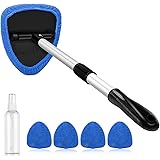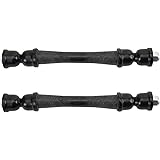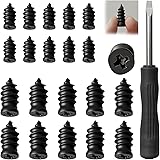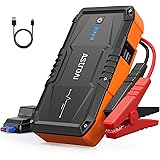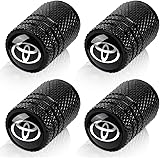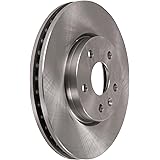Table of Contents
Are you tired of inconsistent temperatures in your vehicle? Is your HVAC system failing to provide the desired airflow? The issue might lie with the blend door actuator, a critical component responsible for controlling temperature and airflow.
Calibrating the blend door actuator is essential for proper function. A misaligned or faulty actuator can lead to discomfort during your drive. Fortunately, calibrating it is a straightforward process that can be completed in just a few steps.
I will guide you through the process, ensuring you can easily achieve the desired temperature control in your vehicle.
Key Takeaways
- Understand the importance of blend door actuator calibration.
- Learn the simple steps to calibrate your blend door actuator.
- Improve your vehicle’s HVAC system performance.
- Achieve consistent temperature control.
- Enhance your driving comfort.
Understanding Blend Door Actuators and Their Function
Knowing how blend door actuators work is key to solving temperature problems in your car. These actuators are vital for your car’s HVAC system.
What Is a Blend Door Actuator?
A blend door actuator controls the blend door in your car’s HVAC system. It mixes cold and hot air to get the right cabin temperature. When it works right, the air from the vents matches what you’ve chosen.
How Blend Door Actuators Work in Your Vehicle’s HVAC System
The actuator gets signals from the climate control system. It then moves the blend door to mix hot and cold air. This mix is then sent through the vents. Modern cars use electronic controls, but older ones might use vacuum.
Common Types of Blend Door Actuators
There are two main types: electronic and vacuum-controlled. Electronic ones are common in newer cars and offer precise control. Older cars use vacuum-controlled actuators.
| Type of Actuator | Control Method | Common Applications |
|---|---|---|
| Electronic | Electronic signals | Modern vehicles |
| Vacuum-Controlled | Vacuum pressure | Older vehicles |
Knowing your car’s blend door actuator type is important. It helps you fix temperature and airflow problems.
Signs Your Blend Door Actuator Needs Calibration
Knowing when your blend door actuator needs calibration is key to keeping your car’s HVAC system working right. A bad actuator can make driving uncomfortable and might harm your car’s heating and cooling system.
Temperature Control Issues
Temperature control problems are a big sign that your actuator needs work. If your car blows hot air when it’s set to cold, or cold air when it’s set to hot, it’s a clue. This can be really annoying, whether it’s freezing outside or scorching.
Strange Noises from the Dashboard
Unusual sounds from the dashboard could mean your blend door actuator is acting up. Clicks or grinding when you try to change the temperature might mean the actuator is having trouble.
Inconsistent Airflow
Also, if the air from your vents changes randomly or gets stuck, it might be the actuator’s fault. This is another sign that it needs calibration.
Climate Control System Error Codes
Modern cars show error codes when something’s wrong with the climate control. Seeing codes related to the HVAC system could point to a problem with the blend door actuator.
| Symptom | Possible Cause | Recommended Action |
|---|---|---|
| Temperature control issues | Blend door actuator malfunction | Calibrate the actuator |
| Strange noises from dashboard | Actuator mechanical failure | Inspect and possibly replace |
| Inconsistent airflow | Actuator calibration needed | Calibrate the actuator |
| Climate control error codes | System malfunction | Diagnose using error codes |
Spotting these signs early can stop bigger problems with your car’s HVAC system. If you’re seeing any of these issues, try calibrating your blend door actuator.
Tools and Materials Needed for Calibration
Choosing the right tools is key to calibrating your vehicle’s blend door actuator. The tools needed can change based on your vehicle’s make and model.
Essential Tools List
To start calibrating, you’ll need these basic tools:
- A set of screwdrivers (flathead and Phillips)
- A trim removal tool
- A diagnostic scan tool (for modern vehicles)
- A multimeter (for checking electrical circuits)
Optional Equipment That Makes the Job Easier
While not essential, these tools can help:
- A service manual for your specific vehicle make and model
- A work light or flashlight
- A magnetic tray for holding small parts
Diagnostic Tools for Modern Vehicles
Modern vehicles with advanced HVAC systems need a diagnostic scan tool. It helps read error codes, monitor performance, and calibrate the system.
| Diagnostic Tool Feature | Description |
|---|---|
| Error Code Reading | Retrieve and clear trouble codes related to the HVAC system |
| System Monitoring | Monitor real-time data from the HVAC system sensors |
| Calibration Capability | Perform calibration procedures for the blend door actuator |
Having the right tools and equipment makes calibration easier and safer.
Safety Precautions Before Starting
To ensure a safe and successful calibration process, follow these essential safety guidelines. Calibrating your vehicle’s blend door actuator involves working with electrical components. You might need to access areas behind the dashboard, which requires careful preparation.
Electrical Safety When Working with Vehicle Components
When working with your vehicle’s electrical systems, it’s crucial to avoid potential electrical shocks or shorts. Always disconnect the battery before starting work on electrical components. This simple step can prevent serious injury or damage to your vehicle’s systems.
Proper Vehicle Preparation
Before you begin, ensure your vehicle is parked on a level surface and apply the parking brake. This will prevent any accidental movement that could cause injury or complicate the calibration process.
Protecting Interior Components
When accessing the blend door actuator, you’ll likely need to remove dashboard trim or other interior components. Take care to avoid damaging these parts by using the correct tools and techniques. Protecting your vehicle’s interior will save you additional repair costs and maintain your vehicle’s overall condition.
By following these safety precautions, you can ensure a safe and effective calibration process for your blend door actuator.
Locating Your Vehicle’s Blend Door Actuator
The blend door actuator’s spot changes with each car model. It’s key to find where it is.
Common Locations in Different Vehicle Makes and Models
The actuator usually sits in the dashboard. It’s often hidden behind the center console or near the HVAC system.
In Toyotas, it’s often found behind the glove box. Ford cars might have it under the dashboard, near the steering column.
| Vehicle Make | Common Location |
|---|---|
| Toyota | Behind the glove compartment |
| Ford | Under the dashboard near the steering column |
| General Motors | Behind the center console |
Accessing the Blend Door Actuator
After finding the actuator, you might need to take off parts of the dashboard to get to it.
This could mean removing trim panels, glove compartments, or other parts. It’s all to reach the actuator.
Always check your car’s service manual for how to get to the blend door actuator in your car.
Using Service Manuals for Guidance
Service manuals have detailed diagrams and steps to find and get to the blend door actuator.
How To Calibrate Blend Door Actuator: Step 1 – Disconnecting the Battery
Before you start calibrating your blend door actuator, make sure to disconnect the battery. This step is key for safety. It prevents any accidental starts or electrical shocks during the process.
Why Battery Disconnection Is Important
Disconnecting the battery is crucial for a few reasons. It stops any accidental engine starts or electrical surges. These could mess up the calibration or even hurt you. It also lets you work on the vehicle’s electrical systems safely, without worrying about short circuits.
Proper Battery Disconnection Procedure
To safely disconnect the battery, follow these steps:
- Turn off the engine and all electrical accessories.
- Find the battery and spot the negative (-) cable, usually marked with a negative sign or colored black.
- Loosen the nut on the negative cable clamp with a wrench, then pull the clamp off the battery post.
- Keep the negative cable away from the battery to avoid accidental reconnection.
Maintaining Vehicle Settings During Disconnection
When you disconnect the battery, you might lose some vehicle settings. This includes radio presets or clock settings. To keep these settings, use a memory saver device or write them down before you disconnect. Some newer cars might keep these settings even after the battery is removed, so check your car’s manual.
Step 2: Removing Necessary Dashboard Components
To get to the blend door actuator, you need to take apart parts of the dashboard. This is key for calibrating the actuator right.
Dashboard Disassembly Techniques
To take out the dashboard parts, follow the right steps. First, check your car’s service manual for what to remove. Usually, this means taking off trim panels, glove boxes, and sometimes the center console.
Use the right tools to avoid harming the parts. For instance, use plastic trim removal tools to remove trim safely.
Organizing Removed Parts
When you take off the dashboard parts, organize them well. Label each part and put them in separate containers. This makes putting everything back together easier and less stressful.
Avoiding Damage to Trim and Panels
When taking off dashboard parts, don’t use too much force to avoid damaging the trim and panels. Work slowly and use the correct tools. If something seems stuck, check the clips or screws again.
By carefully removing the dashboard parts, you can get to the blend door actuator. Then, you can start the calibration process.
Step 3: Resetting the Actuator
Resetting the actuator is a key step in fixing temperature control problems.
To reset the blend door actuator, you have a few options. These depend on your vehicle’s make and model.
Manual Reset Methods
Some actuators can be reset by hand. You need to find the actuator, take it out, and put it back in after a short time. Always check your vehicle’s manual for the right steps.
Electronic Reset Procedures
Modern cars need an electronic reset. You can use a diagnostic tool plugged into the OBD-II port. The tool will show you how to reset it, step by step.
Using Vehicle Computer Systems for Resets
Many new cars let you reset the actuator through the computer. You can do this through the dashboard or a diagnostic tool.
Here’s a look at the different reset methods:
| Reset Method | Description | Vehicle Compatibility |
|---|---|---|
| Manual Reset | Involves physically removing and re-installing the actuator | Older vehicle models |
| Electronic Reset | Uses a diagnostic tool connected to the OBD-II port | Most modern vehicles |
| Computer System Reset | Accessed through the vehicle’s dashboard settings or diagnostic tool | Contemporary vehicles with advanced computer systems |
Knowing how to reset your blend door actuator helps fix HVAC system problems. It’s all about choosing the right method for your car.
Step 4: Performing the Calibration Sequence
The calibration sequence is key and changes with each vehicle. It’s important to pay close attention. You need to follow the exact steps for your car.
Calibration Procedures for Different Vehicle Types
Car makers have their own ways to calibrate. Some need a manual adjustment, while others use the car’s computer. Knowing your car’s method is crucial.
- Manual Calibration: This means moving the actuator to its default position. You’ll find detailed instructions in your car’s manual.
- Electronic Reset: This uses the car’s computer to set the actuator right. It’s common in newer cars with advanced systems.
Verifying Proper Movement and Position
After starting the calibration, check if the actuator moves right. Listen for odd sounds or shakes that might mean trouble.
- Watch how the actuator moves during calibration.
- Make sure it goes all the way open and closed.
- If it doesn’t move or gets stuck, look up troubleshooting tips or get help from a pro.
Software-Based Calibration Methods
Modern cars have advanced software for calibrating parts like the blend door actuator. Technicians use the car’s diagnostic port and special software for this.
This method calibrates the actuator just like the maker intended. It can lead to better temperature control and system performance.
By following the right calibration steps for your car, you’ll get the best out of your HVAC system.
Step 5: Reassembly and Testing
After calibrating, it’s time to put everything back together and test it. This step is key to making sure the blend door actuator works right. It also checks if the car’s heating and cooling system is working as it should.
Proper Reassembly Techniques
Putting the dashboard and other parts back together needs patience and care. Begin by attaching any trim or panels you took off, making sure they fit well. Then, reconnect any wires you had to take out during calibration. Always check your car’s manual for the right steps, as different cars have different needs.

Testing the Calibration
After you’ve put everything back, start the car and test the heating and cooling. Change the temperature settings to see if the blend door actuator moves right. Also, listen for any odd sounds that might mean something’s wrong.
Verifying Full System Functionality
Next, make sure the whole heating and cooling system is working right. Check that air comes out of the right vents and the temperature matches what you set. If you find any problems, you might need to go back to calibration or get help from a mechanic.
By doing these steps, you can make sure your blend door actuator is set up right. This will help your car’s heating and cooling system work well.
Troubleshooting Common Calibration Issues
Dealing with blend door actuator calibration problems is a common challenge. Even after following the steps to calibrate, issues can still occur. This section will help you identify and solve these common problems.
When the Actuator Won’t Reset
If your blend door actuator won’t reset, it might have a mechanical or electrical problem. First, inspect the actuator’s electrical connections for any damage. Make sure the actuator is aligned correctly and free from obstructions.
- Check for any blockages in the actuator’s linkage.
- Verify that the actuator is receiving the correct voltage.
- Consult your vehicle’s service manual for specific reset procedures.
Dealing with Persistent Clicking Sounds
A constant clicking sound from the blend door actuator area is a sign of trouble. This sound often means the actuator is trying to move too much or there’s a calibration issue.
- Check the actuator’s calibration to ensure it was done correctly.
- Lubricate the actuator’s moving parts to reduce friction.
- If the clicking persists, consider replacing the actuator.
Temperature Control Still Not Working
If temperature control still doesn’t work after calibration, there might be a deeper issue. Here are some things to check:
- The blend door’s integrity and whether it’s properly attached.
- The HVAC system’s settings and ensure it’s configured correctly.
- For any error codes stored in the vehicle’s computer system.
Error Codes After Calibration
After calibrating the blend door actuator, you might see error codes on your dashboard. These codes often point to a problem with the calibration or another issue.
To fix this, use a code reader to diagnose the specific error. Then, refer to your vehicle’s service manual or a professional mechanic for help in clearing the codes and solving the problem.
Manufacturer-Specific Calibration Procedures
Calibration procedures for blend door actuators differ across vehicle makers. It’s key to know these differences for a successful calibration.
Ford Vehicles
For Ford cars, calibration uses a diagnostic tool. This tool is connected to the vehicle’s OBD port. Ford’s service manuals give detailed steps for this process.
“The blend door actuator calibration process for Ford vehicles requires precise steps as outlined in the service manual to ensure proper HVAC operation.” – Ford Service Manual
General Motors Vehicles
General Motors (GM) vehicles need a unique approach. GM’s method involves removing power from the actuator and then re-energizing it. This can be done by disconnecting the battery or using a scan tool to reset the HVAC control module.
| Manufacturer | Calibration Method | Tools Required |
|---|---|---|
| Ford | Diagnostic Tool Initiated | OBD Scanner, Ford Service Manual |
| General Motors | Power Cycle or Scan Tool | Scan Tool, Service Manual |
| Toyota/Honda | Manufacturer-specific Scan Tools | Specific Scan Tools, Service Manuals |
Toyota and Honda Vehicles
Toyota and Honda cars need special scan tools for calibration. These tools help access the HVAC system’s control module and start the calibration.
European Vehicle Models
European cars, like BMW, Mercedes-Benz, and Volkswagen, have complex HVAC systems. They need advanced diagnostic tools for calibration. The process might use specific software and hardware.
By following the right calibration steps for each maker, technicians can make sure the blend door actuator works well. This leads to better HVAC performance and comfort.
When to Replace Instead of Calibrate
When your blend door actuator has problems, knowing when to replace it is key. Sometimes, it’s cheaper to replace it than to calibrate it.
Signs of Permanent Actuator Failure
If your blend door actuator shows certain signs, it might need to be replaced. Signs of permanent failure include:
- Persistent clicking sounds even after attempted calibration
- Complete failure to control temperature
- Visible physical damage to the actuator
Cost Comparison: Calibration vs. Replacement
When choosing between calibration and replacement, think about the cost implications. Calibration might seem cheaper at first. But, a faulty actuator might need many calibrations, which could cost more than a new one.
| Procedure | Estimated Cost |
|---|---|
| Calibration | $50-$200 |
| Replacement | $200-$500 |
DIY Replacement Guidelines
If you decide to replace it, here are some DIY guidelines:
- Purchase a replacement actuator that fits your vehicle.
- Disconnect the battery to avoid electrical shocks.
- Take off dashboard parts to get to the actuator.
- Put in the new actuator, making sure it’s aligned right and connected well.
Understanding permanent failure signs and cost factors helps you decide between calibrating or replacing your blend door actuator.
When to Seek Professional Help
While you can try to calibrate your blend door actuator yourself, some problems need a pro. DIY fixes can work for some issues, but others need expert care.
Dealing with complex HVAC problems can be tough without the right tools and knowledge. If your car’s temperature control is off, you hear strange noises, or see error codes, it’s time to call a mechanic.
Complex HVAC System Issues
Today’s cars have advanced HVAC systems that need special tools to fix. If you’re not sure what’s wrong or don’t have the right tools, a mechanic can help.
Dealer-Only Programming Requirements
Some cars need dealer-only programming for repairs, like blend door actuator calibration. If your car needs this, you should go to a dealership or a trusted mechanic with access.
Cost Estimates for Professional Calibration
The price for professional calibration varies by car make, model, and where you are. Expect to pay $100 to $300 for labor. Dealerships might charge more for harder repairs.
| Service | Average Cost | Duration |
|---|---|---|
| Professional Calibration | $100-$300 | 1-2 hours |
| Dealer-Only Programming | $150-$500 | 1-3 hours |
| Complex HVAC Repair | $500-$1000 | Several hours or days |
In summary, while DIY calibration is possible, some problems are better left to the pros. This is true for complex issues or when dealer-only programming is needed.
Conclusion
Calibrating the blend door actuator is key for a working HVAC system. By following the 5 steps in this article, you can fix your vehicle’s temperature and airflow problems.
Getting your blend door actuator right is vital for a great HVAC system. It gives you the right temperature and airflow, making your drive better.
After calibrating, you should see better temperature and airflow in your car. But if problems keep coming back, you might need to check again or get help from a pro.
Knowing how to calibrate your blend door actuator and keeping your HVAC system in check makes driving more comfortable. It can also save you from expensive repairs later.
FAQ
What is a blend door actuator and how does it work?
How do I know if my blend door actuator needs calibration?
What tools do I need to calibrate my blend door actuator?
How do I access the blend door actuator in my vehicle?
Do I need to disconnect the battery before calibrating the blend door actuator?
How do I reset the blend door actuator?
What is the calibration sequence for my blend door actuator?
What if my blend door actuator still doesn’t work after calibration?
Can I calibrate my blend door actuator myself, or do I need to seek professional help?
How much does it cost to calibrate or replace a blend door actuator?
FAQ
What is a blend door actuator and how does it work?
A blend door actuator is part of a car’s HVAC system. It controls the air temperature by adjusting the blend door. This door mixes hot and cold air. The actuator gets signals from the climate control system to make these adjustments.
How do I know if my blend door actuator needs calibration?
You might need to calibrate your actuator if you have trouble with temperature control. Also, if you hear strange noises from the dashboard or notice inconsistent airflow. Climate control system error codes are another sign.
What tools do I need to calibrate my blend door actuator?
You’ll need a service manual, diagnostic tools, and basic hand tools for calibration. A multimeter and a scan tool can also be useful.
How do I access the blend door actuator in my vehicle?
The location of the blend door actuator varies by vehicle. Check your service manual for the exact location and how to access it.
Do I need to disconnect the battery before calibrating the blend door actuator?
Yes, disconnecting the battery is recommended before calibration. It ensures safety and prevents system malfunctions.
How do I reset the blend door actuator?
The reset process depends on your vehicle type. Some need manual reset, while others use electronic methods. Always check your service manual for the right steps.
What is the calibration sequence for my blend door actuator?
The calibration sequence also varies by vehicle. Some need a specific temperature setting or button press sequence. Others use software calibration. Always refer to your service manual for the correct steps.
What if my blend door actuator still doesn’t work after calibration?
If your actuator still doesn’t work, you might need to troubleshoot or seek professional help. Look for error codes, clicking sounds, or other symptoms that suggest a deeper issue.
Can I calibrate my blend door actuator myself, or do I need to seek professional help?
Calibrating yourself is possible, but some vehicles require dealer-only programming. If you’re unsure, consult your service manual or a mechanic.
How much does it cost to calibrate or replace a blend door actuator?
Costs vary by vehicle and labor rates. Calibration can cost from $0 (DIY) to hundreds of dollars. Replacement can cost from a few hundred to over a thousand dollars, depending on the repair complexity.
What are the signs of permanent actuator failure?
Signs of permanent failure include persistent clicking, loss of temperature control, or error codes. If you see these, replacing the actuator might be more cost-effective than calibration.
What are the signs of permanent actuator failure?
(DIY) to hundreds of dollars. Replacement can cost from a few hundred to over a thousand dollars, depending on the repair complexity.
What are the signs of permanent actuator failure?
Signs of permanent failure include persistent clicking, loss of temperature control, or error codes. If you see these, replacing the actuator might be more cost-effective than calibration.


